For when I need to show rather than tell, I set up a thing.
Category: Blog
-
The roaring 2020s and their spectacular picture palaces

Blank screen, auditorium to yourself, can’t lose. Photo by me, 18 April 2024. I took myself off to the movies lastnight. First time since 1917. The Sam Mendes film I mean, uh, obviously.
Having gone on my little Godzilla binge earlier in the year, I thought it fitting that I take myself out to the latest instalment. The film itself was fine. Good loud dumb fun. Exactly the same formula as the others. A great soundtrack. Rebecca Hall being her wonderful earnest self. Dan Stevens being… whatever he is now (though he’ll always be Matthew to me). Content to one side, though, it was just great to be in the cinema again. For someone who allegedly studies the stuff from time to time, I don’t watch as much as I’d like; and I certainly don’t go to the cinema often at all. Lastnight showed me I probably should change that.
I’ve often ruminated, in text and in brain, about the changing media landscape. I’m far from the only one, and recently Paris Marx put up a post about his quest to find Dune: Part One on home media. This story resonated with me. I have a sizeable physical media collection; it’s a dear asset and hobby, and one I am constantly surprised is not even close to mainstream nowadays.
The production of physical has shifted considerably as demand has waned in the streaming era. DVDs are still, somehow, fairly popular; mostly due to an ageing and/or non-discerning audience (though that last bastion of DVDs, the supermarket DVD section, seems to have died off, finally). Blurays maintain a fair market share, but still require specialist hardware and are region-locked. Despite 4K Blurays being region-free and, with even a semi-decent TV, utterly gorgeous, they hold next to nothing of the market, being really only targeted at huge AV nerds like me.
During COVID, the streaming platforms cemented their place in the homes and lives of everyone. I am certainly no exception to this. It was insanely convenient to have pretty much the world’s media output at the touch of a button. It was a good time: subscription prices were still relatively low, and the catalogues were decent enough to be worth having more than one or two services on the Apple TV at any given time.
Netflix, Stan (an Aussie streaming service), and Prime Video were staples. They were also producing their own content, so in a way, they were modelling themselves on the megalithic studios of yore — as producers, distributors, marketers, even as archivists of popular culture.
Things change, of course. They always do.
Post-COVID, catalogues were culled. Most streaming services were operating, if not at a loss, then at least just breaking even with the equation of producing original content and/or buying distribution rights to older properties, or just other stuff in general.
Then the original producers (in some cases the original studios) figured out they could just do it themselves. Disney+, Paramount+, Sony Core (aka Columbia); their own catalogues, their own archives, their own films straight from the cinema deal to the home media deal with no pesky negotiation.
Prices for all streaming services have steadily risen over the last few years. For your average household, hell, even your above-average household, having all subscriptions active at one time simply isn’t feasible. It’s usually a question of who’s got what content at what time; or employ our house’s strategy and binge one or two platforms in one- or two-monthly bursts.
Finding something specific in a given streaming catalogue is not a given. So you either pay Apple or Google or whoever to rent for a day or two or a week or whatever; or you pay them to ‘lease’ a copy of the film for you to view on-demand (they call this ‘buying’ the film). If giving money to the megacorps isn’t what you had in mind, maybe your brain would turn to the possibility of buying a physical copy of said media item for yourself.
So you load up a web browser and punch in your best local media retailer. In my case, it’s a loud yellow behemoth called JB Hi-Fi; for more obscure titles or editions, it’d be something like Play DVD. These places are thin on the ground and, increasingly, even thin in the cloud. But JB’s physical media collection is dwindling, and has been for years. Their DVD/Bluray shelves used to occupy half of their huge stores; now they have maybe half a dozen tucked down the back, with the old real estate now occupied by more drones, more influencer starter kits, more appliances or pop culture paraphernalia.
It struck me lastnight, as I headed into the cinema, that perhaps the film experience could see a bit of a bump if streaming services continue to fracture, and if physical media stock continues to disappear. If it’s a specific film that you want to see, and you know it’s on at the cinema, it’s probably more efficient overall to go and see it then and there. There are no guarantees any given film will be put up on a given streaming platform, nor that it will even get a physical media release any more. And if it does appear in either form, what quality will it be in? Would the experience be somehow diminished?
There’s also something to be said for the sheer ubiquity and disposability of media in our current moment, particularly within the home, or home-based clouds. If I spot something on Netflix, I’ll add it to my List. I may watch it, but 7 times out of 10, I’ll forget it existed; once Netflix changes their catalogue, that item just floats away. I’m not notified; I’m not warned; unless it’s something on my watchlist on Letterboxd, or in a note or something, it just vanishes into the ether. Similarly with home media; if there’s a sale on at JB for Blurays, I might pick up a couple. They’ll then go on the shelf with the many, many others, and it might take years until I eventually get to it.
There’s an intentionality to seeing a film at the cinema. In general, people are there to be absorbed in a singular experience. To not be distracted. To actually switch off from the outside world. I don’t claim any media superiority; I am a big old tech bro through and through, but there is something to the, ahem, CINEMATIC EXPERIENCE that really does retain the slightest touch of magic.
So yes, perhaps we will see a little hike in moviegoing, if the platform economy continues to expand, explode, consume. Either that, or torrents will once again be IN for 2025 and beyond. Switch on that VPN and place your bets.
-
Inertia

Photo by Alexander Zvir, via Pexels. Since the interminable Melbourne lockdowns and their horrific effect on the population of the city, my place of work has implemented ‘slow-down’ periods. These are usually timed around the usual holiday periods, e.g. Christmas, Easter, but there’s usually also a slowdown scheduled around mid-semester and mid-year breaks. The idea isn’t exactly to stop work (in this economy? ahahahaha no, peasant.) but rather to skip or postpone any non-essential meetings and spend time on focused work. Most often for teacher-researchers like myself, this constitutes catching up on marking assignments or prepping for the coming weeks of classes, though sometimes we can scrape up some time to think about long-gestating research projects or creative work. That’s the theory, anyway.
I will say it’s nice to pause meetings for a week or two. The nature of academic work is (and should be) collaborative, dependent on bouncing ideas off others, working together to solve gnarly pedagogical issues, pooling resources to compile rich and nuanced ciritical work. But if you’re balancing teaching or coordination along with administrative or managerial duties, plus postgraduate supervisions and research stuff, it can be a lot of being on, a lot of just… people work. I’ll throw in a quick disclaimer here that I’m very lucky to have a bunch of lovely colleagues, and the vast majority of my students have been almost saccharinely delightful to work with. It can still be a lot, though, if you’re pretty woeful at scheduling around your energy levels, as I often am. Hashtag high achiever, hashtag people pleaser, hashtag burnout, hashtag hashtag etc etc etc.
Academics are notorious for keeping weird hours, or for working too much, or for not having any boundaries around work and life. And I say this as someone who has embodied that stereotype with aplomb for years (even pre-academia, to be honest). I’ve had many conversations with colleagues where we bemoan working late into the evening, or over the weekend, or around other commitments. I’ve often been hard-pressed to find anyone who has any hard boundaries around work and not-work.
Taking extended leave last year was the first time I’ve ever properly stopped working. No sneaky finishing of research projects, no brainstorming the next media class, no cheeky research reading, no emails. It showed me many things, but primarily how insidious work can be for someone with my disposition and approach to life in general. It is also insidious when you are passionate, and when you care. I care deeply about media education and research, and have become familiar with its rhythms and contours, its stresses and its delights, its (many) foibles and much deeper issues. I care about students and ensuring they feel not just ‘delivered to’ or ‘spoken at’, but rather that they’re exposed to new ways of thinking; inspired to learn well beyond graduation, indeed, to never stop learning; enabled and empowered to tell their stories, and whatever stories they want to tell. I care about producing research, e.g. journal articles, video essays, presentations and events, that is not tired, stale, staid, boring, dense, conventional, but rather is experimental, vibrant, connected, open-ended, and appeals broadly across multiple disciplines and outside the academy.
I’m not alone here. As mentioned above, I have colleagues who almost universally feel exactly the same way. And I’ve built a local and international research network who share these passions and questions and concerns. A global support group. I’m very lucky and privileged in this way.
But yeah: all this shit is fucking exhausting. The environment, the sector, the period, certainly doesn’t help. The current model of academia, university management, tertiary education, the industry/academy nexus, capitalism (in summary: neoliberalism), all of it is quite happy to capitalise on passion, on modern productivity dicta around never-being-done, irons-in-the-fire, publish or perish, manage it all or die, no life for you, hang the consequences and anyone you’re dealing with who isn’t work (e.g. partners, kids, friends, families). To anyone who says academics have a cushy job and get paid too much: kindly take yourself into the sea, thanks. That may have been true in the past, but we’re living on the other side of whatever spectrum you’re looking at.
Suffice to say, slowdowns are nice. Taking proper breaks and/or having an executive echelon that genuinely supports and structures wellbeing and balance would be ideal, but beggars can’t be choosers.
-
Binnsy’s web
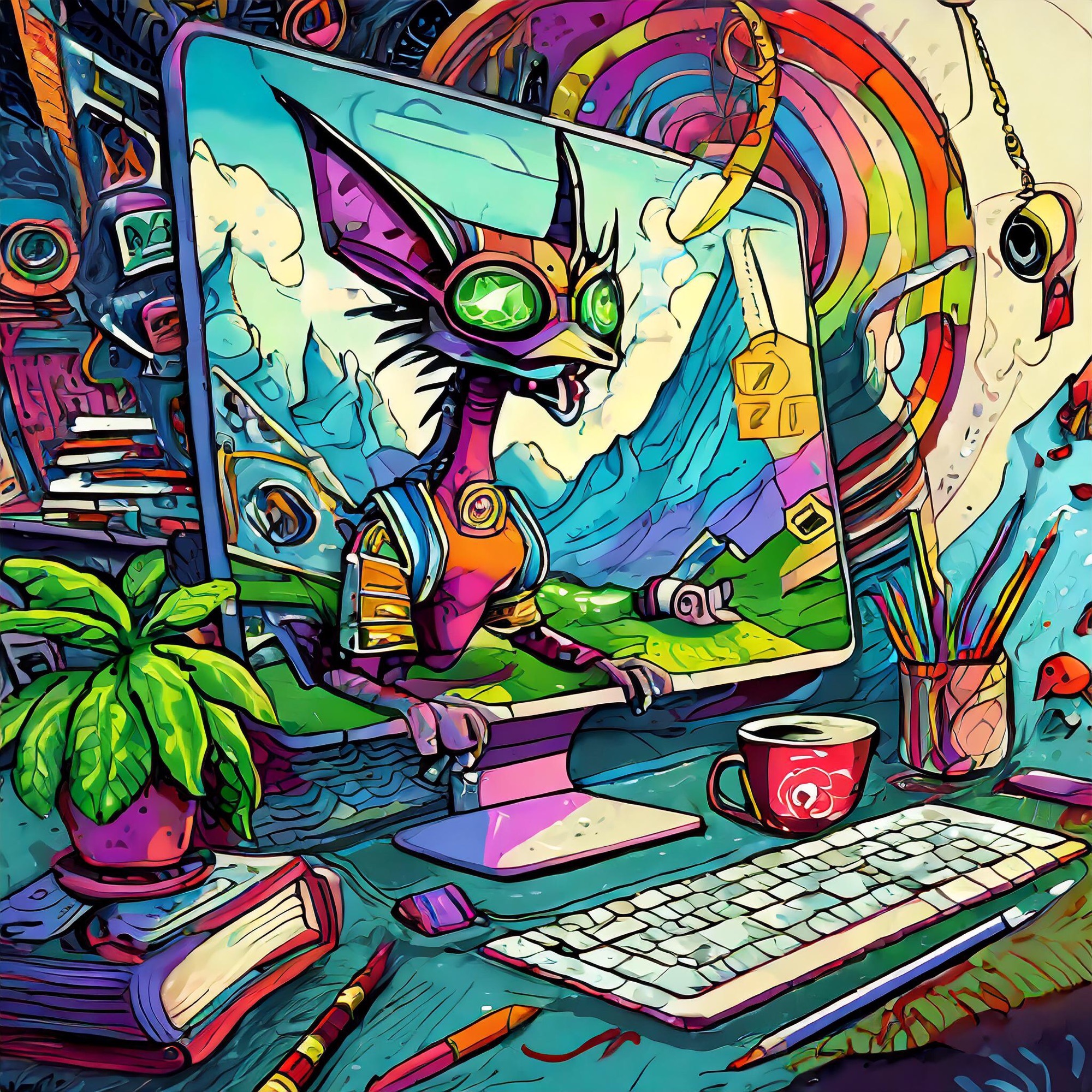
Image generated using Adobe Firefly; prompt by me. I’m exploring options for shifting this website off WordPress. There are a few different reasons for this. The general thoughts and attitudes of the vainglorious leader of this platform have certainly factored into my thinking here. But if I’m being honest, I think it’s more about wanting to move one tiny part of my online life away from a corporatised, platformed internet.
WordPress has been much more than just a CMS for me and my websites; I’ve hosted with them, bought domains through them, and deployed WP.org as a CMS on some old independently hosted sites. But the more I read about platforms and the future of a heavily algorithmic internet, the less I want my blog/website to be a part of that.
Anyway, I’ve taken the first step in terms of securing another domain and host. I’m still figuring out the best way to migrate, but I’m in no great rush.
I’m treating this as a learning opportunity too; to get back into some very basic and fun HTML, or to at least run a lightweight but well-designed little site. I would like my online home to be a bit more transparent to me, in terms of how it’s structured, where it’s hosted, what the backend looks like. This is key, I think, to being a part of a more open, less gate-kept internet. I also want to own my words; enough said.
-
Operation Tech Revival, Part 3
Read Part 1 here, and Part 2 here.

Obligatory artfully-cropped stock photo of a completely different Macbook model to the one discussed in this post. Photo by Math on Pexels.com. Part 3: Give me my MacBook back, Mac.
2012 was a big year. The motherland had the Olympics and Liz’s Diamond Jubilee; elsewhere, the Costa Concordia ran aground; Curiosity also made landfall, but intentionally, on Mars; and online it was nothing but Konys, Gangnam Styles and Overly Attached Girlfriends as far as the eye could see.
For me, I was well into my PhD, around the halfway mark; I’d also scaled back full-time media production work for that reason, and was picking up the odd shift at Video Ezy again. It was also the year that I upgraded to a late 2011 MacBook Pro. I think I had had one Macbook before then, possibly purchased in 2007-8; prior to this a Windows machine that was nicked from my inner west apartment around 2009, along with a lovely Sony Alpha camera (vale).
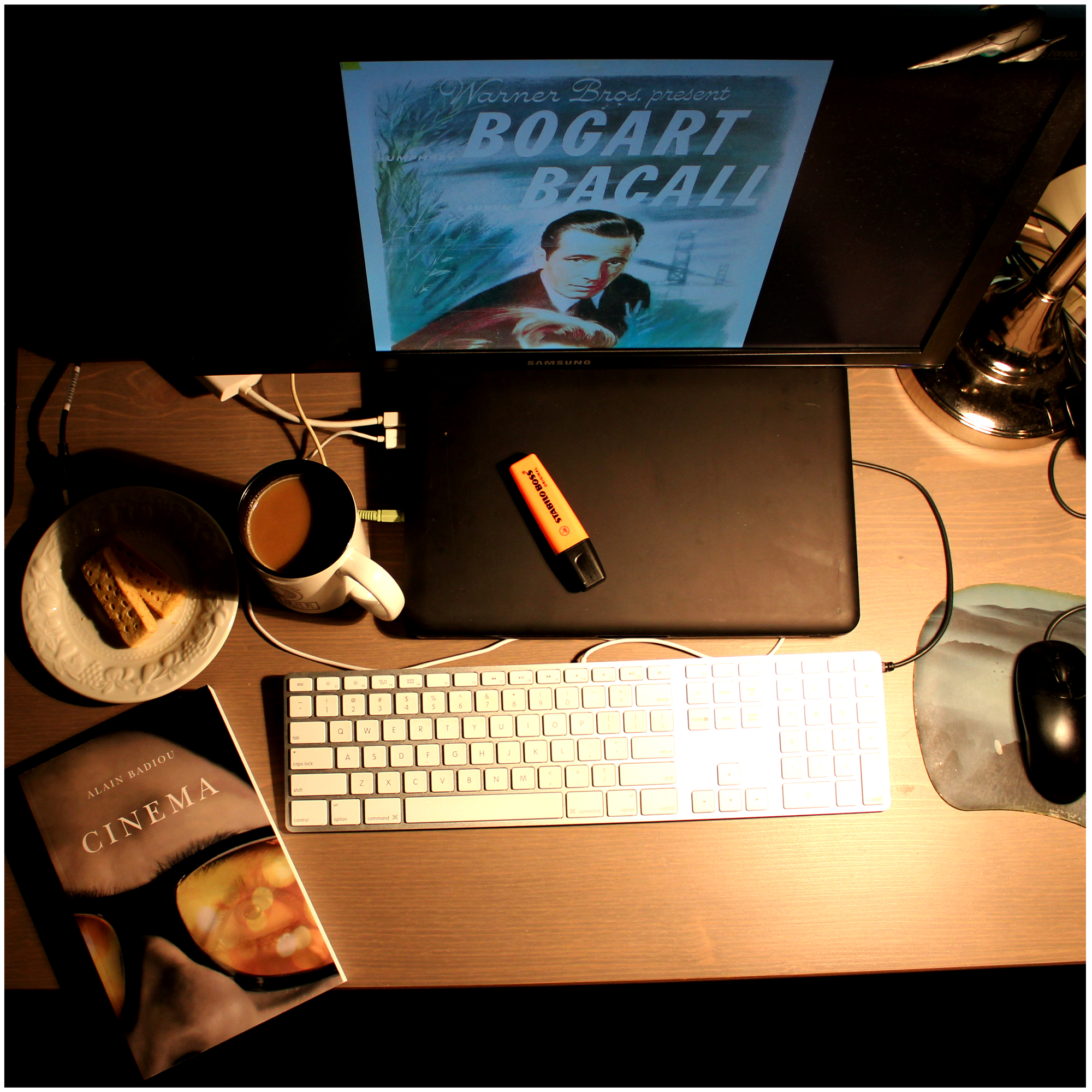
I can’t believe this image persists on Flickr. Here’s the same machine, with its nice black suit on, in situ during the completion of said PhD! The 2011 MacBook served me well until early 2015, when I was given the first work machine, which I’m fairly sure was a late 2014 MBP. I tried to revive the 2011 machine once before, when my partner needed a laptop for study; however, when in early 2020 it took approximately 5 minutes to load a two-page PDF, we thought maybe it was time to put it away. For some reason though, I just held onto it, and it sat idle in the cupboard, until a week or two ago, when I caught myself thinking: what if…?
So having more or less sorted the Raspberry Pi, I turned my attention to this absolute chunkster of a laptop. It’s amazing how the sizes and shapes of tech come in and out of vogue. The 2011 MBP is obviously heavier than the work laptop, but not by as much as you’d think (2.04kg vs. 1.6kg for my 2020 M1 machine), with roughly the same screen size. Obviously, though, the older model has much thicker housing (h2.4cm w32.5cm d22.7cm vs. h1.56 w30.41 d21.24cm). Anyway, some swift searching about (by myself but mainly by my best mate, who also has huge interest in older tech, both hardware and software) led to iFixIt, where a surprisingly small amount of money resulted in an all-in-one 500GB SSD upgrade kit arriving within a few days.
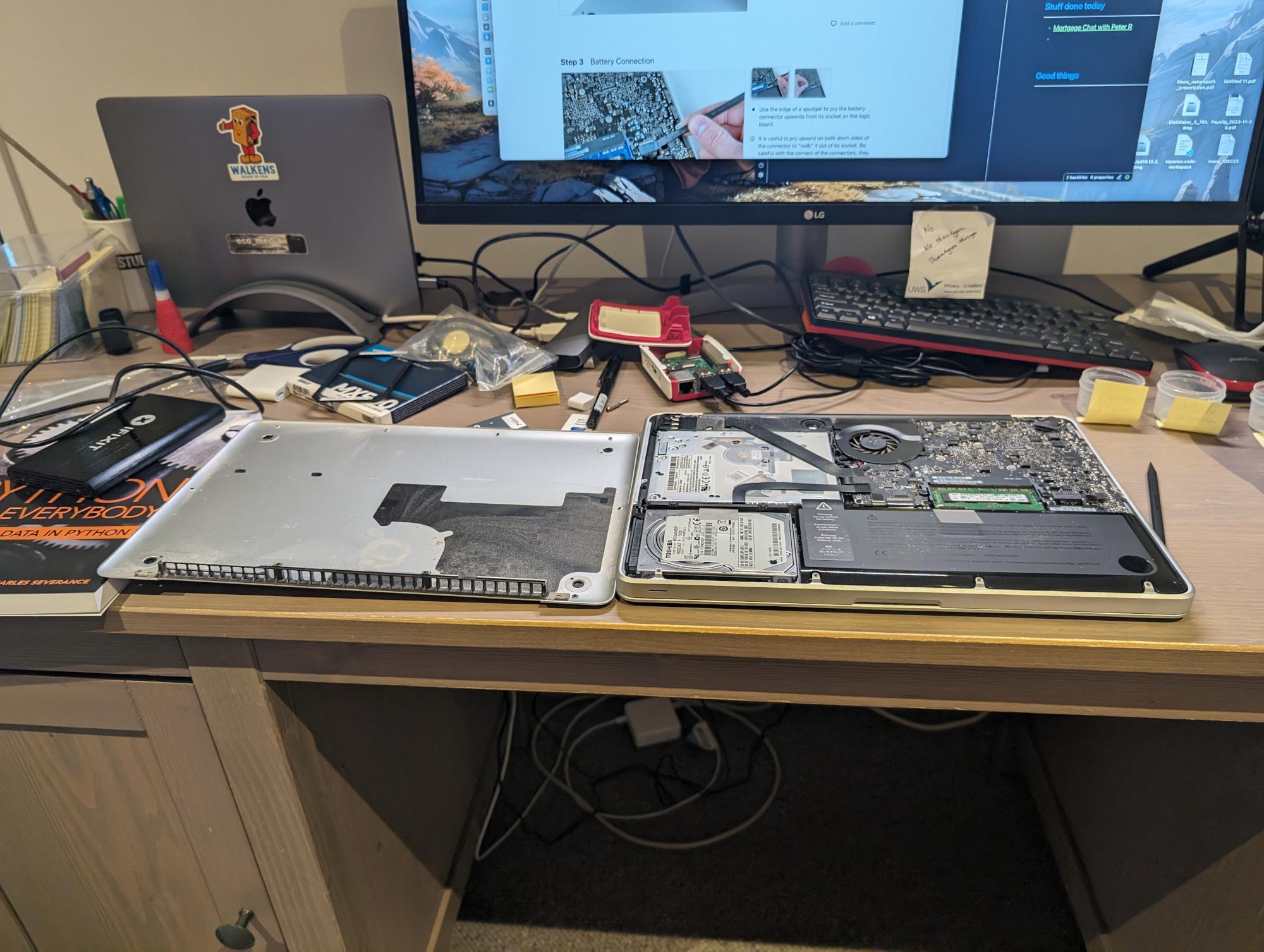
I aspire to the perfect techbro desktop-fu. How did I do? I had some time to kill late last week, so I set about changing the hard drives. It was also the perfect opportunity to brush away many years of accumulated dust, and a can of compressed air took care of the trickier areas. With the help of tutorials and such, all of this took under half an hour. What filled the rest of the allotted time was sorting out boot disks for OS X. Internet Recovery was no-go at first, but with several failed attempts at downloading the appropriately agėd version, I tried once again. No good. Cue forum and Reddit diving for an hour or two, before finally obtaining what seemed to be the correct edition of High Sierra, without several probably-very-necessary security patches and so on.
Anyway, I managed to boot up High Sierra off an ancient USB, got it installed on the SSD, and then very quickly realised that while the SSD certainly afforded greater speed than before, High Sierra was virtually unusable apart from the already installed apps and a browser. I knew I could probably try to upgrade to Mojave or maybe even Big Sur, but even with the SSD, I wasn’t sure how well it would run; and it was still tough to find usable images for those versions of macOS. But somewhere in my Reddit and forum explorations I’d seen that some had succeeded in installing Linux on their older machines, and that it had run as well and/or even better than whatever the latest macOS was that they could use.
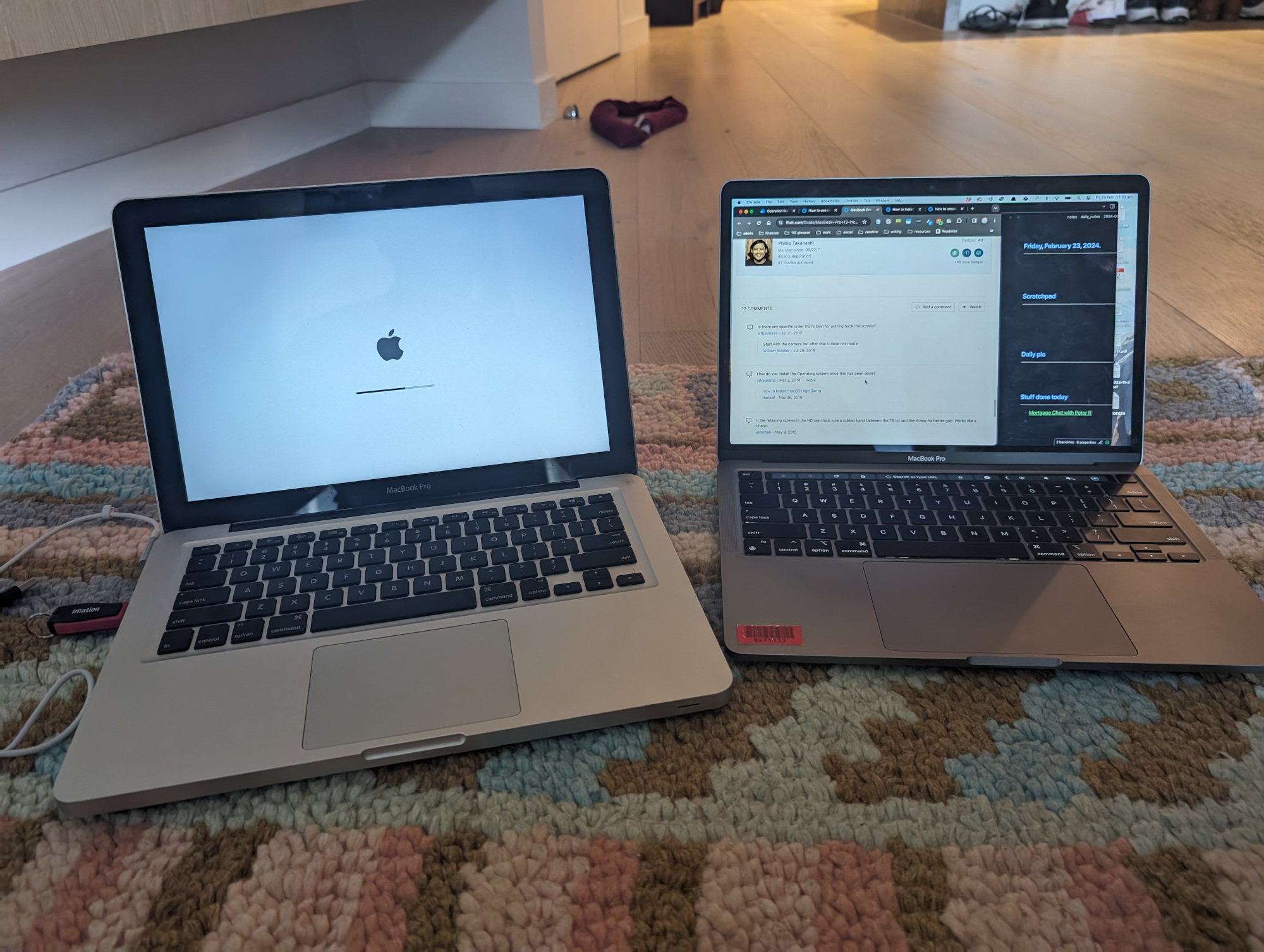
Two laptops, both alike in backlit keyboard, on fair floor where we lay our scene. Thanks to the Pi, I had a little familiarity with very basic Linux OS’s (aka DISTROS, yeah children I can use the LINGO I am heaps 1337); it was down to whether the MBP could run Ubuntu, or whether Mint or Elementary would be more efficient. In the end, I went with Mint, and so far so good? It’s a little laggy, particularly if multiple apps are open; I’m drafting this in Obsidian and the response isn’t great. I would also note that the systems’s fan is on, and loud, most of the time, even with mbpfan running. The resolution on my 4K monitor is worse than the Pi, of course, but this is due to the lack of direct HDMI output from the MBP; I’m using a Thunderbolt to HDMI adapter. That said, maybe I just have to tweak some settings.
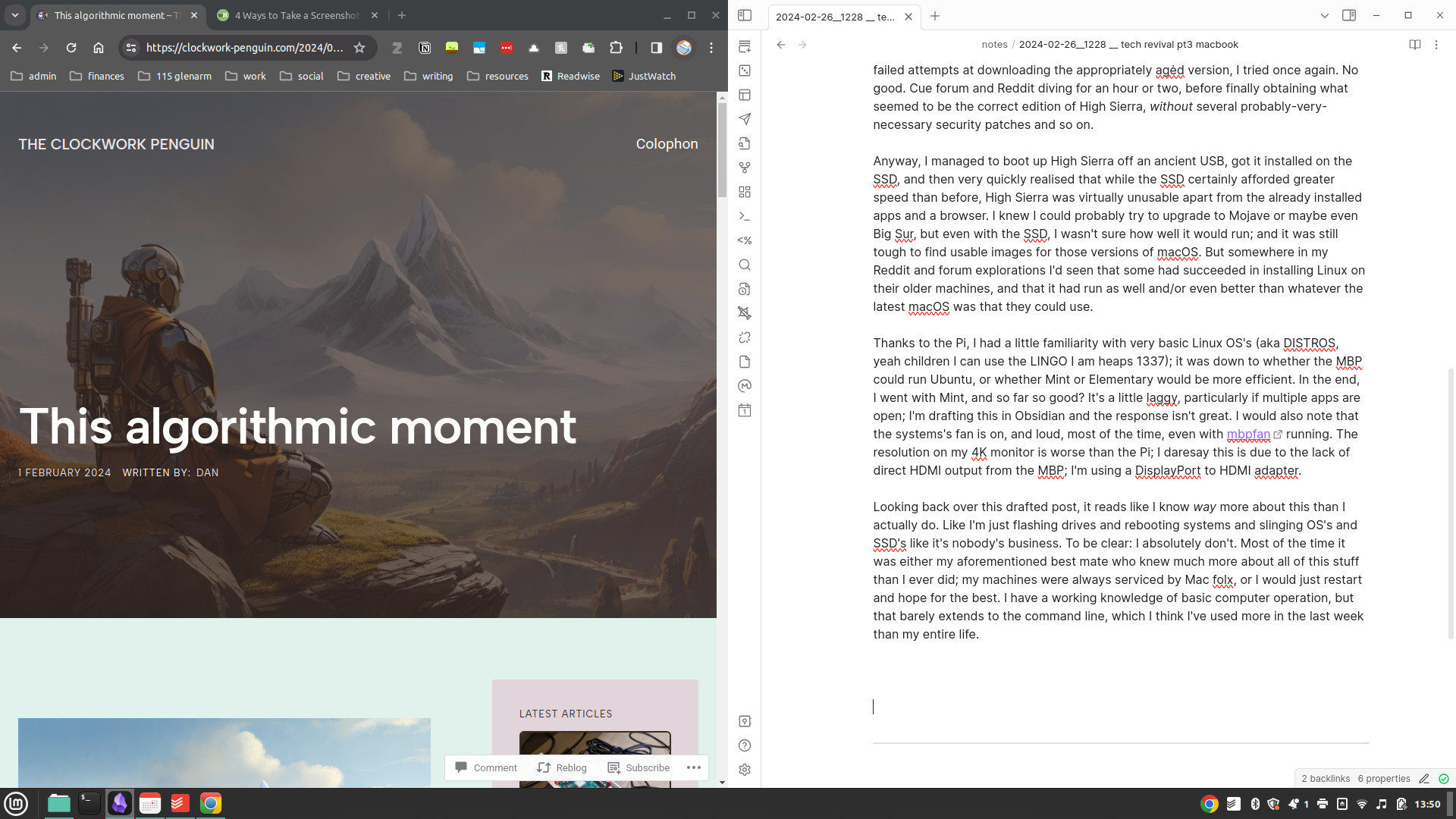
A glimpse behind the curtain. In the meantime, it’s been fun to play in a new OS; Mint feels very Windows-esque, though with some features that felt very intuitive to a longer-term Mac user. Being restricted to maybe a maximum of five apps running simultaneously means I have to be conscious of what I’m doing: this actually helps me plan my workspace and my worktime more carefully. I’m using this as a personal machine, so mostly for creative writing and blogging; in general, it affords more than enough power to do a little research, take notes, draft work. If there’s anything more complex, I’ll probably have to shift to the work machine, though I did clock ShotCut and GIMP being available for basic video/image work, and obviously there’s Audacity and similar for audio.
Physically, the MBP sits flat on my desktop in front of the monitor. Eventually I will probably get a monitor arm, so it can slide back a little further. Swapping it out for my work machine isn’t too difficult; I just have to plug the HDMI into a USB-C dongle that permanently has a primary external drive, webcam and mic hooked up to it. Now that I think of it, my monitor probably has more than one HDMI input, so potentially I could just add a second HDMI cable to that arrangement and save a step. Something to try once this is posted! I’m still in a bit of cable hell, as well, due to just wanting the simplicity of plugging in a USB keyboard and mouse to the old Macbook; over the next week or two I’ll try to configure the Bluetooth accessories for bit more desktop breathing room.
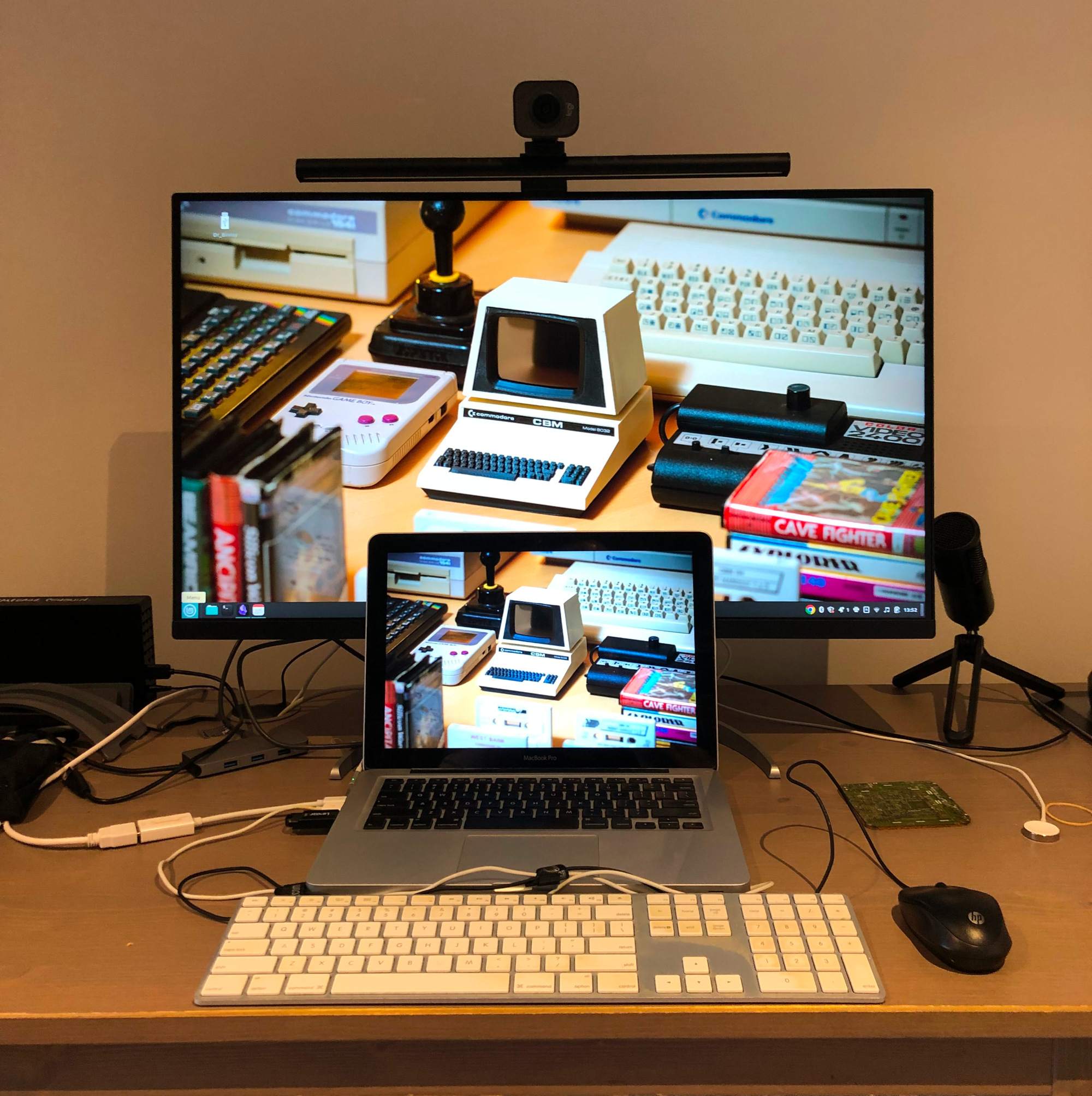
Behold the crisp image quality of the iPhone 8 (an old-tech story for another time…). Apart from these little tweaks, the only ‘major’ thing I want to tweak short-term is the Linux distro; it just feels like Mint Cinnamon may be pushing the system a little too hard. Mint does offer two lighter variants, MATE and Xfce, though I also did download Elementary and Ubuntu MATE. Mint MATE for the MBP, I reckon, and then maybe even Ubuntu MATE on the Pi. To be fair, though, most of the time the machine is struggling, I have Chrome open, so I could also just try a lighter browser, like one of your Chromiums or your Midoris.
Looking back over this drafted post, it reads like I know way more about this than I actually do. Like I’m just flashing drives and rebooting systems and slinging OS’s and SSD’s like it’s nobody’s business. To be clear: I absolutely don’t. Most of the time it was either my aforementioned best mate who knew much more about all of this stuff than I ever did, or other tech-savvy friends or colleagues; my machines have always been repaired, maintained, serviced by Mac folx, or I would just restart and hope for the best. I have a working knowledge of basic computer operation, but that barely extends to the command line, which I think I’ve used more in the last week than across my entire life. As discussed here, I don’t really code either. Most of this, for me, is just trial and error; I guess my only ‘rules’ are reading up as much as I can on what’s worked/not for other people, and trying not to take too many unnecessary risks in terms of system security or hardware tinkering. The risk in this instance is also lessened by the passing of time: warranties are well out of date and thus won’t be voided by yanking out components.
As a media/materialism scholar, I know conceptually/theoretically that sleek modern devices and the notion of ‘the cloud’ belies the awful truth about extractive practices, exploited workforces, and non-renewable materials. Reading and writing about it is one thing; to see the results of all of that very plainly laid out on your desk is quite another. One cannot ignore the reality of the tech industry and how damaging it has been and continues to be. In the same vein, though, I’m glad that these particular materials and components won’t be heading to landfills (or more hopefully, some kind of recycling centre) for a little while longer.